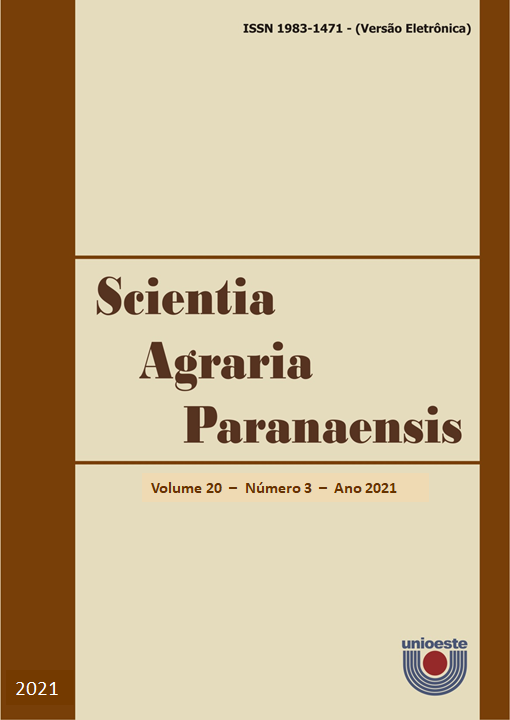Nutrition with micronutrients in sugarcane: brief review
DOI:
https://doi.org/10.18188/sap.v20i3.28188Abstract
Sugarcane has economic value worldwide, being used in the production of sugar, electricity and alcohol. Therefore, the objective was to demonstrate the research carried out in recent years on the main micronutrients and their respective effects on the development and yield of sugarcane. Micronutrient deficiency is one of the factors that limit the productivity of this crop in producing regions, and this deficit is related to several aspects, such as the use of fertilizers with low levels of micronutrients, increased agricultural productivity, decreased levels of organic matter in the soil. Thus, it is noteworthy that the proper management can circumvent the limiting factors, since the application of boron via the leaves results in a greater ton of stalks, and in relation to zinc, applied via the soil, it is also beneficial to the production of stalks. Molybdenum increases biological nitrogen fixation in sugarcane and contributes to the accumulation of N in the plant. Iron and manganese are both involved in the chlorophyll content and dry matter accumulation of sugarcane. The study exposes the contributions of fertilization with microelements for the development of the sugarcane sector. From this perspective, more research is needed on the fertilization of micronutrients to boost sugarcane productivity under different edaphoclimatic conditions.
Downloads
Published
How to Cite
Issue
Section
License
Aviso de Direito Autoral Creative Commons
Política para Periódicos de Acesso Livre
Autores que publicam nesta revista concordam com os seguintes termos:
1. Autores mantém os direitos autorais e concedem à revista o direito de primeira publicação, com o trabalho simultaneamente licenciado sob a Licença Creative Commons Attribution que permite o compartilhamento do trabalho com reconhecimento da autoria e publicação inicial nesta revista.2. Autores têm autorização para assumir contratos adicionais separadamente, para distribuição não-exclusiva da versão do trabalho publicada nesta revista (ex.: publicar em repositório institucional ou como capítulo de livro), com reconhecimento de autoria e publicação inicial nesta revista.
3. Autores têm permissão e são estimulados a publicar e distribuir seu trabalho online (ex.: em repositórios institucionais ou na sua página pessoal) a qualquer ponto antes ou durante o processo editorial, já que isso pode gerar alterações produtivas, bem como aumentar o impacto e a citação do trabalho publicado (Veja O Efeito do Acesso Livre).
Licença Creative Commons
Esta obra está licenciada com uma Licença Creative Commons Atribuição-NãoComercial-CompartilhaIgual 4.0 Internacional, o que permite compartilhar, copiar, distribuir, exibir, reproduzir, a totalidade ou partes desde que não tenha objetivo comercial e sejam citados os autores e a fonte.


